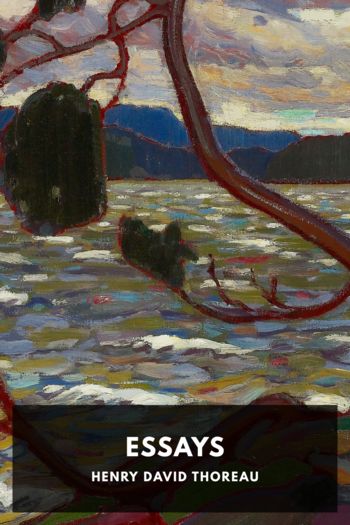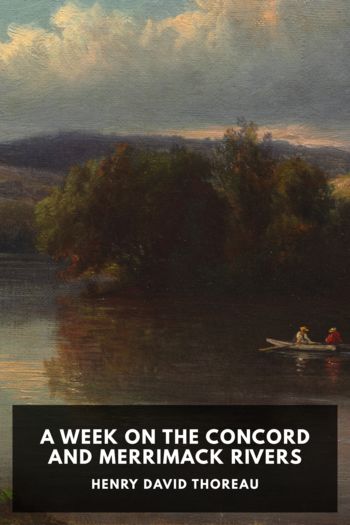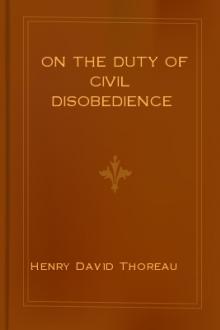Essays by Henry David Thoreau (feel good books .txt) 📕

Description
Though perhaps most famous for Walden, Henry David Thoreau was also a prolific essayist. Many of his essays touch on subjects similar to his famous book: long walks through nature, things found in moonlight that are invisible and unheard during the day, his preference for wild apples over domestic ones. In many ways he prefigured environmentalism, expressing his love for untouched nature and lamenting what the encroachment of man and cities were doing to it.
He also had strong opinions on many other subjects. One of his most famous essays, “On the Duty of Civil Disobedience,” was written as a result of his going to jail for refusing to pay several years’ worth of poll taxes. One of the primary reasons for his refusal was his holding the government in contempt for its support of slavery, and several of his other essays express support and admiration for John Brown, who thought to start a slave revolt when he attacked Harper’s Ferry in 1859.
Whether discussing trees in a forest, slavery, or the works of Thomas Carlyle, Thoreau’s essays are deeply personal and full of keen observations, often in poetic language. They give a sense of the man expressing them as being much more than the views being expressed.
Read free book «Essays by Henry David Thoreau (feel good books .txt) 📕» - read online or download for free at americanlibrarybooks.com
- Author: Henry David Thoreau
Read book online «Essays by Henry David Thoreau (feel good books .txt) 📕». Author - Henry David Thoreau
But though these are indigenous, like the Indians, I doubt whether they are any hardier than those backwoodsmen among the apple-trees, which, though descended from cultivated stocks, plant themselves in distant fields and forests, where the soil is favorable to them. I know of no trees which have more difficulties to contend with, and which more sturdily resist their foes. These are the ones whose story we have to tell. It oftentimes reads thus:—
Near the beginning of May, we notice little thickets of apple-trees just springing up in the pastures where cattle have been—as the rocky ones of our Easterbrooks Country, or the top of Nobscot Hill, in Sudbury. One or two of these perhaps survive the drought and other accidents—their very birthplace defending them against the encroaching grass and some other dangers, at first.
In two years’ time ’t had thus
Reached the level of the rocks,
Admired the stretching world,
Nor feared the wandering flocks.
But at this tender age
Its sufferings began:
There came a browsing ox
And cut it down a span.
This time, perhaps, the ox does not notice it amid the grass; but the next year, when it has grown more stout, he recognizes it for a fellow-emigrant from the old country, the flavor of whose leaves and twigs he well knows; and though at first he pauses to welcome it, and express his surprise, and gets for answer, “The same cause that brought you here brought me,” he nevertheless browses it again, reflecting, it may be, that he has some title to it.
Thus cut down annually, it does not despair; but, putting forth two short twigs for every one cut off, it spreads out low along the ground in the hollows or between the rocks, growing more stout and scrubby, until it forms, not a tree as yet, but a little pyramidal, stiff, twiggy mass, almost as solid and impenetrable as a rock. Some of the densest and most impenetrable clumps of bushes that I have ever seen, as well on account of the closeness and stubbornness of their branches as of their thorns, have been these wild-apple scrubs. They are more like the scrubby fir and black spruce on which you stand, and sometimes walk, on the tops of mountains, where cold is the demon they contend with, than anything else. No wonder they are prompted to grow thorns at last, to defend themselves against such foes. In their thorniness, however, there is no malice, only some malic acid.
The rocky pastures of the tract I have referred to—for they maintain their ground best in a rocky field—are thickly sprinkled with these little tufts, reminding you often of some rigid gray mosses or lichens, and you see thousands of little trees just springing up between them, with the seed still attached to them.
Being regularly clipped all around each year by the cows, as a hedge with shears, they are often of a perfect conical or pyramidal form, from one to four feet high, and more or less sharp, as if trimmed by the gardener’s art. In the pastures on Nobscot Hill and its spurs, they make fine dark shadows when the sun is low. They are also an excellent covert from hawks for many small birds that roost and build in them. Whole flocks perch in them at night, and I have seen three robins’ nests in one which was six feet in diameter.
No doubt many of these are already old trees, if you reckon from the day they were planted, but infants still when you consider their development and the long life before them. I counted the annual rings of some which were just one foot high, and as wide as high, and found that they were about twelve years old, but quite sound and thrifty! They were so low that they were unnoticed by the walker, while many of their contemporaries from the nurseries were already bearing considerable crops. But what you gain in time is perhaps in this case, too, lost in power—that is, in the vigor of the tree. This is their pyramidal state.
The cows continue to browse them thus for twenty years or more, keeping them down and compelling them to spread, until at last they are so broad that they become their own fence, when some interior shoot, which their foes cannot reach, darts upward with joy: for it has not forgotten its high calling, and bears its own peculiar fruit in triumph.
Such are the tactics by which it finally defeats its bovine foes. Now, if you have watched the progress of a particular shrub, you will see that it is no longer a simple





Comments (0)